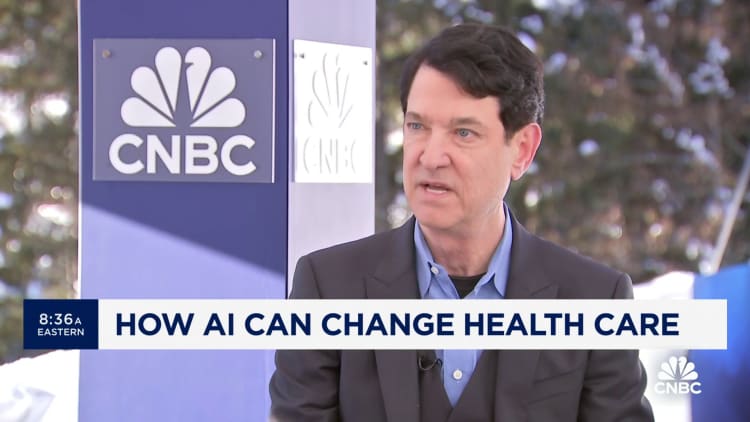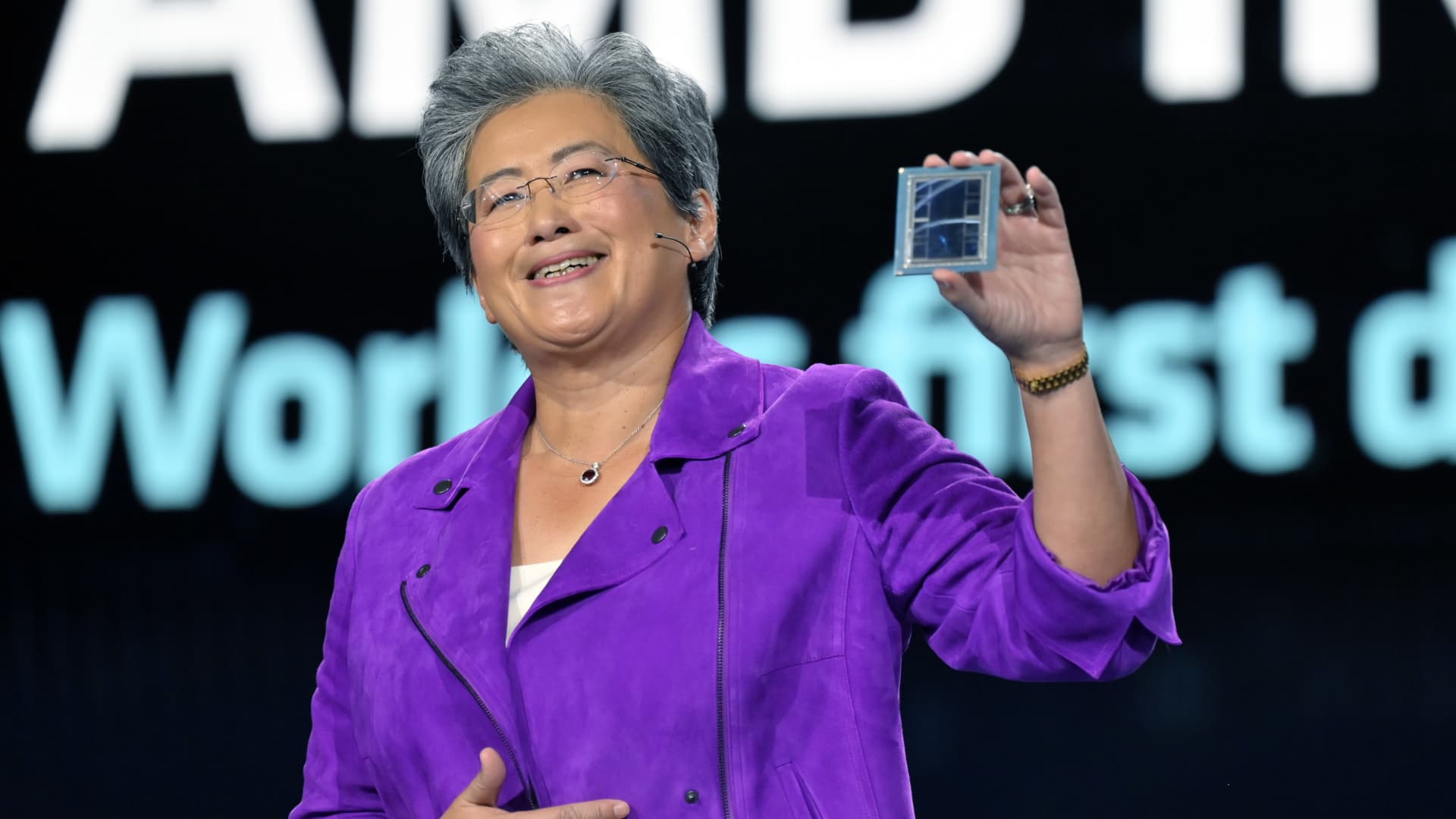Lisa Su displays an AMD Instinct MI300 chip as she delivers a keynote address at CES 2023 in Las Vegas, Nevada, on Jan. 4, 2023.
David Becker | Getty Images
AMD shares rose more than 7% on Tuesday to their highest since reaching a record in November 2021, on optimism that the company’s artificial intelligence chips will be in higher demand from companies like Microsoft, Google and OpenAI.
Tom O’Malley, an analyst at Barclays, raised his price target on AMD to $200 from $120, saying that AMD could post $4 billion in AI chip sales this year. O’Malley, who has the equivalent of a buy rating on the stock, cited strong demand for the MI300, AMD’s highest-end machine learning chip for servers.
KeyBanc analysts also increased their price target for AMD to $195 and Nvidia to $740 on Tuesday, due to strong demand for AI servers.
AMD was trading at $156.63 as of Tuesday afternoon, roughly 3% below the stock’s all-time high. Nvidia, which has the vast majority of the market for AI chips and was the best-performing stock in the S&P 500 last year, advanced almost 3% to $562.16.
In late 2023, AMD announced new server chips for AI to compete with Nvidia’s H100 and A100 GPUs, which are used by OpenAI to train and serve its models like the one at the heart of ChatGPT.
AMD and Nvidia are the two major producers of graphics processing units (GPUs,) which were invented for advanced computer games, but are now critical to train and run AI models. As AI applications gained investor attention over the past two years, Nvidia has been the primary beneficiary because the company developed AI software for its chips over 10 years ago.
“They have built a software layer around their chip that the companies I invest in just can’t get enough of,” Venture capitalist Jim Breyer told CNBC on Tuesday.
Breyer said he was “pounding the table” for both Nvidia and AMD shares.
Analysts see AMD improving its AI software, and expect major chip buyers like cloud providers and tech giants to look hard at using AMD GPUs.
“We are by no means discounting the lead that NVDA has but we think the desire to have a second source will overwhelm difficulties for the software ecosystem,” O’Malley wrote.
WATCH: I would add AMD to the ‘Magnificent Seven’








